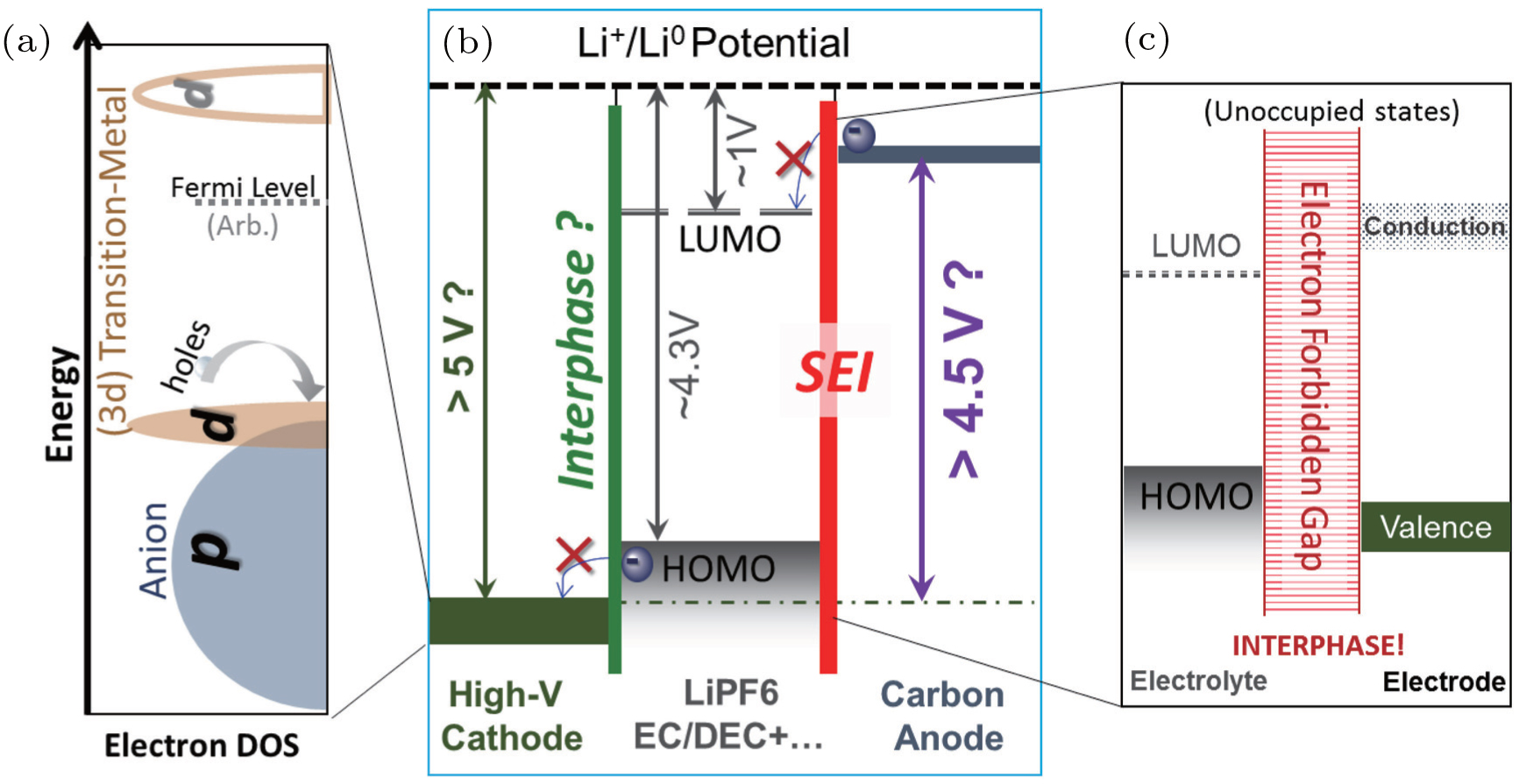Soft x-ray spectroscopy for probing electronic and chemical states of battery materials
Schematic diagram of the critical electron states involved in an LIB. Panel (a) is the schematic of the relative energy positions of TM-3d and O-2p states in positive electrode materials. The dominating character of the highest energy occupied state determines whether a stable TM redox could be accessed during the charging (delithiation) process. This energy configuration also determines the catalytic property of the electrode material surfaces, which may destabilize the electrolyte material even within its electrochemical window shown in panel (b). Panel (b) shows the energy levels of a static open-circuit battery cell with carbonate based electrolyte without considering additives. Panel (c) displays the critical electron state configuration of a desired electrode–electrolyte interphase. This SEI diagram is general and plotted for both the negative and positive electrodes. Detecting, understanding, and controlling these key electron states remain formidable challenges and are directly related to the material and device optimization.

